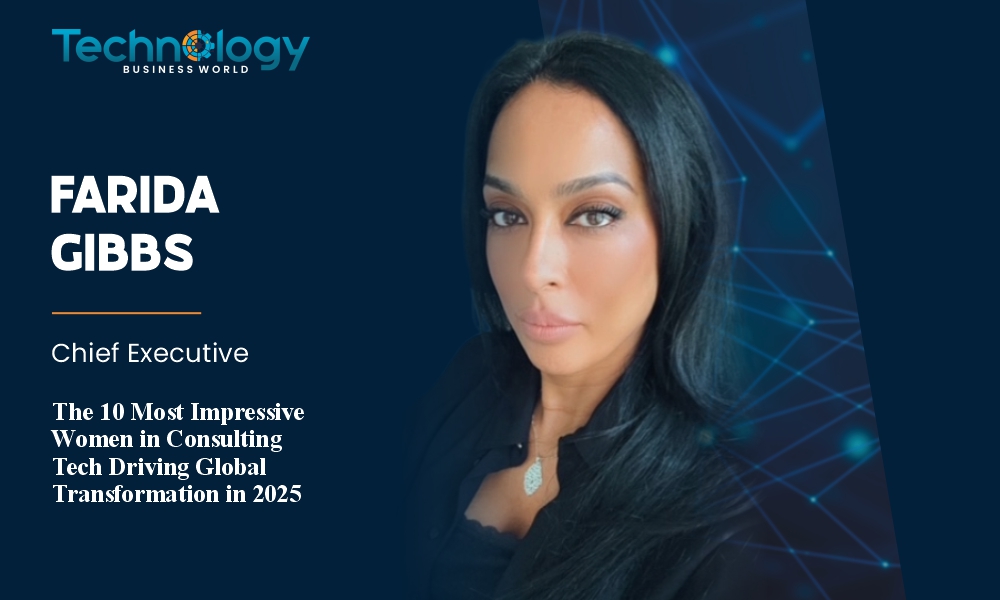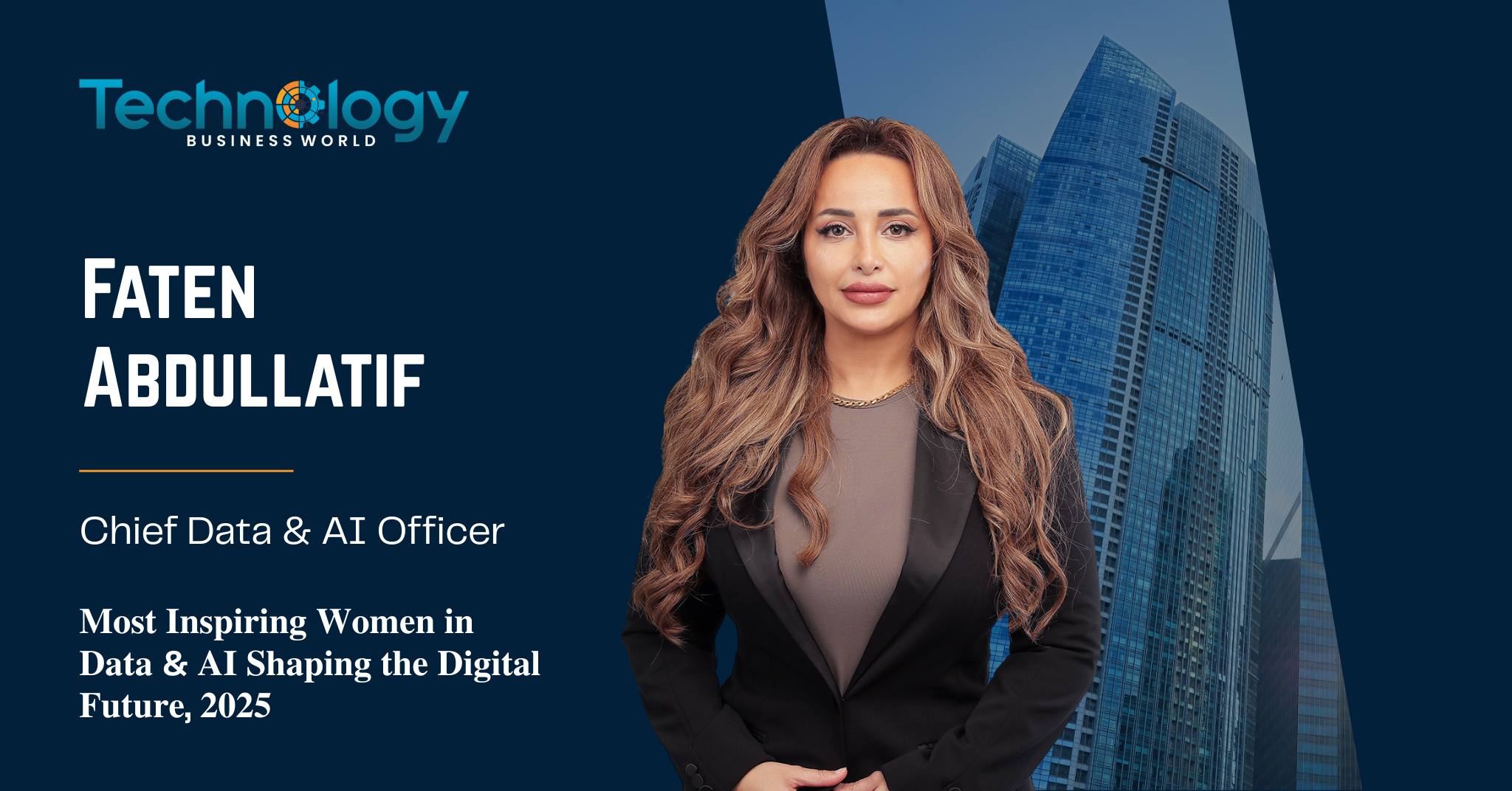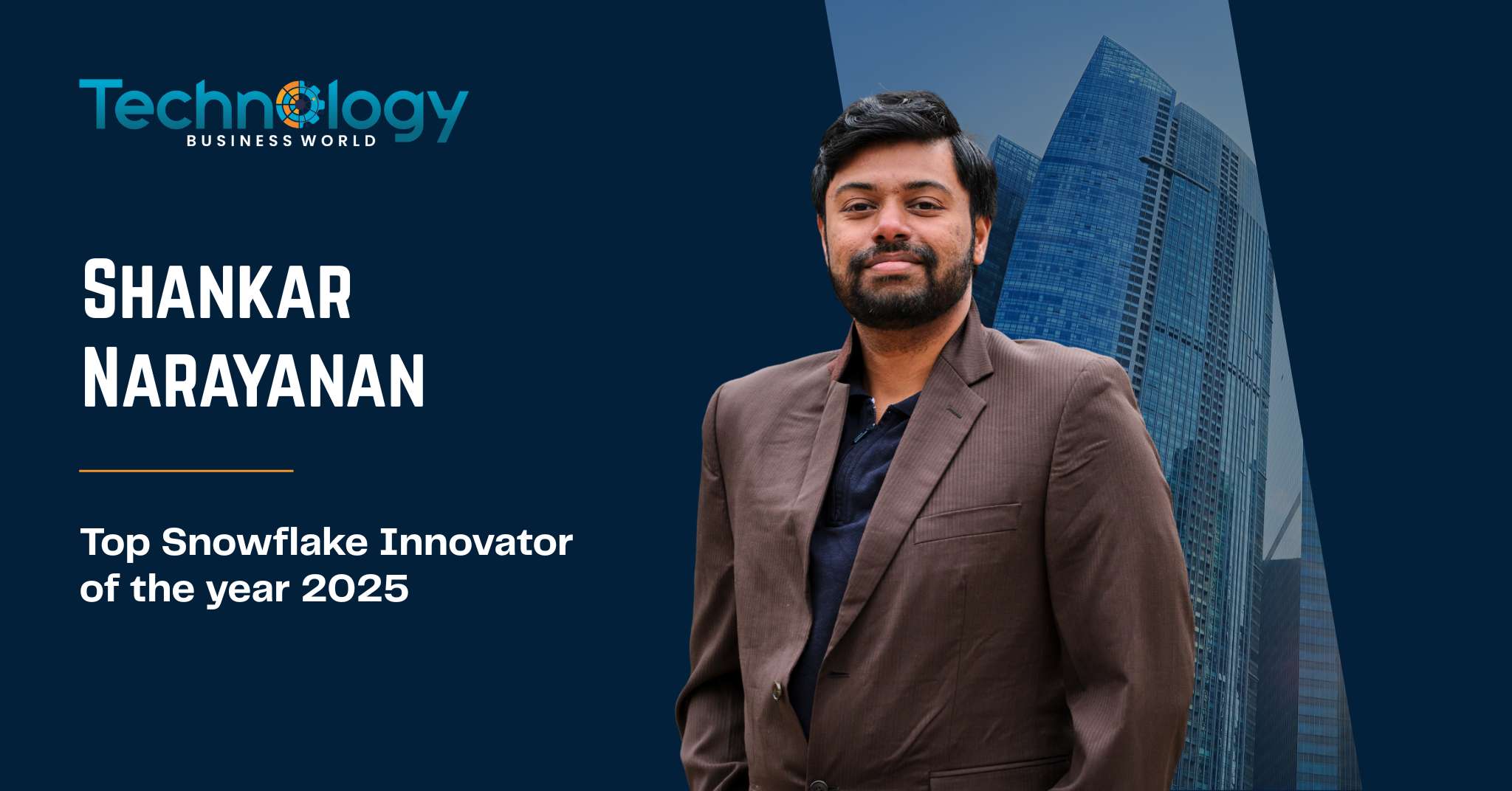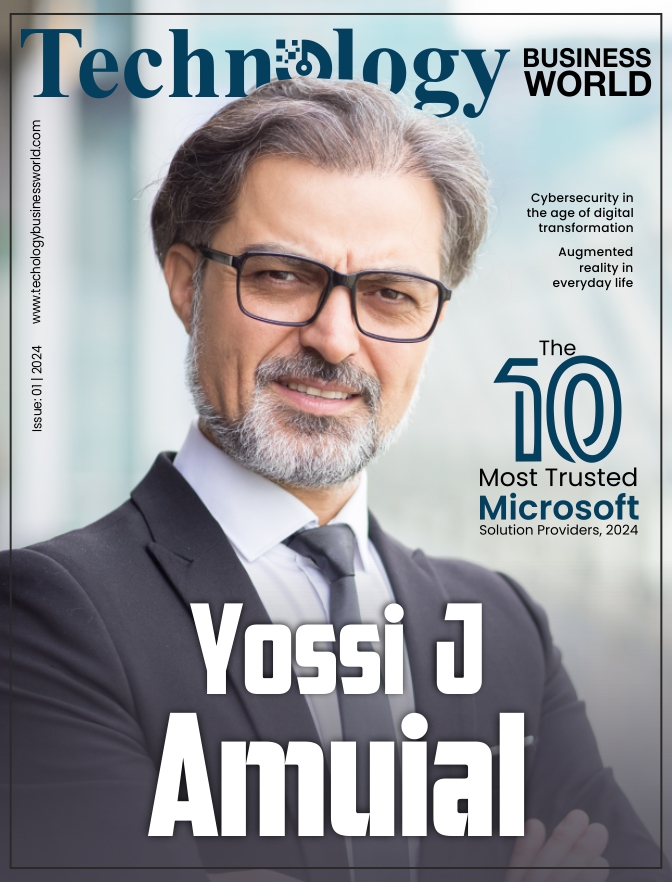In today’s fast-evolving world of technology and consulting, where transformation and disruption are constant, there emerge leaders who do not just keep pace but actively redefine the path ahead. Farida Gibbs, the dynamic Chief Executive of Gibbs Consulting Global, is one such force. Her story is a testament to the power of grit, authenticity, and an unyielding belief in the human spirit’s ability to break barriers.
Farida’s journey from an early morning paper route to the boardrooms of global enterprises is not just an entrepreneurial success story — it’s an inspiring roadmap for women, for underrepresented voices in tech, and for anyone who dares to believe that inclusion and innovation can co-exist powerfully. Through Gibbs Consulting, Farida has made it her mission to build a firm where credibility, competence, and genuine care are not buzzwords but the foundation for how business is done and how people are lifted.
Early Lessons: From Newsagents to Boardrooms
Farida’s entrepreneurial DNA was shaped long before her name would grace headlines as a successful CEO. Her first lessons in discipline and enterprise came at the age of just thirteen, within the four walls of her father’s humble newsagents. While her peers still dreamed away their early mornings, Farida was up before dawn, meticulously preparing the day’s newspapers for delivery rounds. If the team failed to show, she and her younger sister braved the early chill to make sure every doorstep received its morning news.
This daily ritual of responsibility didn’t end with the last delivery. After finishing her rounds, she swapped her delivery bag for a schoolbag, diving into a full day of classes before returning to relieve her father behind the counter in the evenings. From managing daily sales to counting up the till at closing time, Farida discovered early that real-life lessons often lay far beyond school gates.
In that family shop, she found her first taste of leadership — not the type taught in classrooms but the kind forged through service, customer conversations, and an instinct for business. Even then, the spark of being her own boss took root, nurtured by a deep love for service and a fascination with how simple daily interactions could be opportunities for connection and loyalty.
Restlessness Sparks a Leap
As Farida stepped into the professional world, she found herself working with technology recruitment firms. On paper, the roles checked the boxes — promising commissions, a chance to work with exciting tech companies, and career progression for someone with her drive. But the more she immersed herself, the clearer it became that something was missing.
She felt discontent grow as she watched companies chase quotas at the expense of genuine connection. Deals were made, targets hit, but the heart of service she’d learned in her father’s shop was glaringly absent. The transactional approach jarred with her innate belief that the best business comes when you truly care about people — their challenges, their aspirations, and their potential.
Quietly but purposefully, Farida began crafting her escape plan. Even as she delivered on demanding targets, she poured her energy into a business plan scribbled during stolen moments. There was just one obstacle: she lacked the capital to make her vision real. So the dream stayed safely tucked away — until 2005 brought an unexpected door.
When Farida was made redundant, many would have seen only the loss — the sudden uncertainty, the career break in an industry she knew so well. But for Farida, it was freedom. Instead of grieving the end, she saw the birth of what she’d envisioned for so long. Her tears that day were not of defeat but of relief and anticipation. Finally, the girl who woke at 4 AM to prepare newspapers could step fully into her dream of building something of her own — a company that would mirror her values, champion her belief in service, and show the world what it means to lead with purpose.
Breaking Barriers
The early days of establishing herself in the IT services world were anything but easy. The technology landscape, especially within services and banking, has long been a bastion of male dominance. For Farida, stepping into this world as a woman — and an ethnic minority — brought its own unique set of hurdles.
Walking into boardrooms and client meetings, she often found herself the only woman in the room, sometimes the only person from a diverse background. The undercurrent of being perceived as an outsider was palpable. Subtle slights, overlooked contributions, and moments of feeling invisible tested her resolve in ways no business textbook ever prepares you for.
Yet, if there is one thing Farida’s story proves, it is that resilience is born from early discipline. Instead of shrinking, she chose to stand taller, let her results speak louder, and her commitment cut through prejudice. She learned to trust her instincts, push back against dismissals, and demonstrate — again and again — that expertise knows no gender or ethnicity.
Farida turned isolation into insight. The very things that made her an anomaly in boardrooms became the fuel for a broader mission. She knew firsthand how damaging lack of representation can be, how it limits imagination for the next generation. So she refused to just survive these rooms — she decided to change them. Through her leadership, she championed diversity not just as an HR checkbox but as a strategic advantage, demonstrating that different perspectives generate richer solutions, deeper empathy, and stronger, more resilient businesses.
Scaling with Purpose in a Fast-Moving World
In a sector as relentlessly evolving as technology services, growth can easily become a race for numbers alone. But Farida never lost sight of the lessons from her earliest days: service matters, people matter, values matter. As she scaled Gibbs Consulting, she infused this belief into every strategy.
At the heart of her approach was an understanding that real innovation does not happen in echo chambers. It requires a symphony of perspectives — people from different backgrounds, cultures, and experiences coming together to challenge assumptions and co-create solutions. She made it her mission to build teams that were as diverse as the clients they served.
This diversity was not just about optics; it directly fuelled the firm’s agility. By encouraging collaboration between voices that might not otherwise meet, Farida’s teams discovered creative ways to tackle client challenges, design products, and deliver results that were both technically robust and deeply human.
Beyond the team, Farida looked outward to the wider business ecosystem. She actively championed inclusive procurement, making sure that underrepresented suppliers and entrepreneurs found a seat at the table. For her, this wasn’t charity — it was smart business. By tapping into the insights and solutions these partners brought, Gibbs Consulting didn’t just keep pace with market shifts; it often stayed steps ahead.
Another cornerstone of her scaling strategy was continuous learning. Farida understood that in technology, complacency is fatal. So she invested heavily in her people, encouraging professional development, training, and curiosity as core cultural pillars. This mindset meant her teams didn’t just react to change — they anticipated it, shaped it, and sometimes led it.
A Vision Anchored in Credibility, Competence, and Care
Ask Farida about the future of IT consulting, and she paints a vision as ambitious as it is grounded in values. She sees a landscape where diversity and inclusivity are not differentiators but the norm — where companies understand that the best solutions come from teams that look and think like the world they serve.
At the heart of this vision are three guiding principles: Credibility, Competence, and Caring — the 3C’s that define Gibbs Consulting’s DNA. Credibility is about trust — the hard-earned, carefully nurtured confidence that clients place in a partner who delivers transparently and consistently. Competence is the unwavering commitment to staying ahead of trends, investing in knowledge, and never settling for yesterday’s solutions.
And then there is Caring — perhaps the rarest ingredient in a world obsessed with bottom lines and rapid scaling. For Farida, Caring is not an add-on; it is the anchor. It shows up in the way her teams build lasting relationships with clients, the way they listen, adapt, and walk alongside organisations through complex transformations. It shows up internally too — in a culture where every voice is valued, where well-being and growth are non-negotiable, and where empathy drives performance.
This balance of sharp execution and genuine humanity is what Farida believes will keep Gibbs Consulting at the forefront of a rapidly changing industry — a firm that grows not just in size but in impact.
Championing the Tech that Shapes Tomorrow
While values shape Gibbs Consulting’s soul, cutting-edge technology drives its engine. Farida’s deep respect for technology’s transformative power keeps her focused on the trends that will shape the next decade of consulting. For her, the answer starts with Data.
Data Analytics, Artificial Intelligence, and Machine Learning are not just buzzwords — they are the backbone of modern strategy. Farida knows that in a world flooded with information, organisations that learn to harness data intelligently will outpace those that don’t. Data reveals patterns, predicts trends, and powers decisions that can transform customer experiences, drive efficiencies, and unlock new products.
Under her leadership, Gibbs Consulting has become a trusted guide for clients navigating this complex terrain. Whether it’s helping to build a robust data roadmap, designing an AI blueprint, or mapping out a maturity model that aligns with unique business contexts, Farida’s team does more than deploy technology — they empower clients to build it right.
For Farida, it’s about demystifying the hype and grounding innovation in practical, ethical, and human-centered approaches. The goal is not to chase shiny objects but to unlock meaningful, sustainable value that stands the test of time.
Equipping Teams for Tomorrow’s Demands
A leader’s vision can only travel as far as the people who carry it forward. Farida knows this better than anyone. Her approach to future-proofing Gibbs Consulting rests heavily on ensuring that her teams are not just prepared for what’s next but are inspired to shape what comes after that.
Continuous learning is not an HR slogan within Gibbs Consulting — it’s woven into daily life. Farida actively encourages her people to stretch their horizons through training, industry certifications, and exposure to fresh thinking at conferences and webinars. Beyond formal learning, she understands the irreplaceable value of organic knowledge sharing. Gibbs Consulting fosters an environment where insights, lessons learned, and bold new ideas circulate freely, crossing teams and functions to spark solutions that no single silo could ever produce alone.
This collaborative spirit is matched with an agile mindset — the belief that being adaptable and open to change is not optional in tech but a survival skill. By building teams that thrive on curiosity and diverse thinking, Farida ensures that her firm doesn’t just react to market trends — it anticipates them. This is how Gibbs Consulting stays relevant, credible, and resilient, delivering work that truly makes an impact in a world where client needs shift by the minute.
Empowering Women to Break the Mold
For Farida, leading a successful global consultancy is only one part of her mission. Equally important is the path she is clearing for the next generation of women in technology — a sector that, despite progress, still struggles with representation at senior levels.
To women dreaming of stepping into this space, Farida’s message is clear and powerful: confidence is your greatest tool. She knows better than most how easily self-doubt creeps in, whispering that you don’t belong or that your vision is too ambitious. Her life’s work stands as proof that the only true barriers are the ones we accept.
Farida urges aspiring women entrepreneurs to anchor themselves in strong networks — to find mentors, peers, and champions who remind them of their worth when the world tries to dim it. She believes that risk is not something to be feared but embraced. The willingness to leap, to innovate, to do things differently is what sets apart trailblazers from those who settle for the status quo.
More than anything, she reminds women in tech that their unique perspectives are not gaps to close but strengths to spotlight. Diversity of thought is the heartbeat of innovation, and it is women’s voices, ideas, and leadership that will drive the technology landscape forward in ways the world urgently needs.
Leadership Rooted in Selflessness and Care
Farida’s vision of leadership is refreshingly human in an industry often stereotyped as cold or transactional. She wants her legacy at Gibbs Consulting — and far beyond its walls — to be one of selfless leadership, where caring for people’s growth and well-being is the standard, not the exception.
Inside the company, she leads by example, nurturing a culture where people feel safe to bring their whole selves to work. She prioritises creating authentic spaces where every team member feels seen, valued, and empowered to contribute meaningfully. This culture of belonging does not just boost morale — it fuels the company’s creative edge, ensuring that diverse voices shape solutions that resonate with real people and real problems.
Outside Gibbs Consulting, Farida aims to be a living example that women can succeed in tech without compromising authenticity. She wants young professionals to see that you can lead with determination and resilience while staying true to your values, lifting others as you climb.
Building a Legacy for Tomorrow’s Tech Leaders
For Farida, success is not measured solely in revenue or client rosters. Her true metric is the legacy she is building for those who will follow. She is determined to ensure that the next generation of tech leaders — women, people of color, and voices that have historically been marginalised — inherit an industry that is more inclusive, supportive, and open than the one she stepped into decades ago.
Through mentorship and advocacy, she pours her time and experience into empowering emerging leaders to believe in their worth and to lead fearlessly. She demonstrates daily that authenticity is not a liability but an asset, that boundaries are meant to be expanded, and that resilience is cultivated not in isolation but in community.
This legacy work is deeply personal for Farida. She knows what it feels like to walk into a room and wonder if you belong — and she is committed to ensuring that fewer young professionals have to feel that same loneliness. By normalising diverse leadership and pushing back against outdated paradigms, she is seeding an industry where talent, integrity, and passion define success, not gender or background.
A Call to Young Professionals: Believe, Persist, and Make Your Mark
To the countless young professionals stepping into the ever-shifting world of tech consulting today, Farida has one unshakeable message: never give up on your dreams. She understands the self-doubt that comes with navigating a competitive space. But she is living proof that determination and self-belief will carry you further than any credentials alone.
She urges young leaders to trust in their individuality — to embrace what makes them stand out rather than conforming to fit a mold. In a world that too often pressures us to blend in, Farida calls for boldness — to take the risks that others shy away from, to put forward ideas that challenge the norm, and to back themselves fiercely every step of the way.
Farida’s advice is not abstract. It’s woven from the threads of her own lived experience — the early mornings in her father’s shop, the quiet moments drafting a business plan she wasn’t sure she’d ever use, the resilience it took to break into rooms where no one looked like her. For every young professional who feels unseen or underestimated, she stands as a beacon that determination, curiosity, and compassion are enough to light the way.
For Farida, success is not measured solely in revenue or client rosters. Her true metric is the legacy she is building for those who will follow. She is determined to ensure that the next generation of tech leaders — women, people of color, and voices that have historically been marginalised — inherit an industry that is more inclusive, supportive, and open than the one she stepped into decades ago.
For Print and Design Purpose:
Person Name: Farida Gibbs
Designation: Chief Executive
Company: Gibbs Consulting Global
URL: www.gibbsconsulting.com
Quotes:
“Our fundamental difference is not our colour, or our race nor our religion. Our
fundamental difference is purely our intentions and actions to serve those less
fortunate than ourselves.”
“To succeed in business, put customers at the heart of everything you do,
innovate, execute well, build diverse teams and lead with integrity”.















